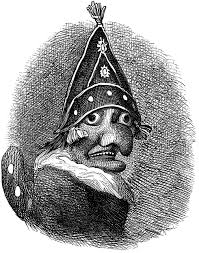
Chasing Czechia
Czechia is the newest name for the Czech Republic, and the latest incarnation for the Kingdom of Bohemia. Charlatan Magazine checks into the Four Seasons Prague, and discovers a progressive, if still enchanting city.

Four Seasons via Four Seasons
They say a child is a parent’s calling card: those wee facsimiles of ourselves who unwittingly reveal our beliefs toward and attitudes about the world. But as every parent bestrides the joy and pride of their young, the rest of the world remains unconvinced. Circumspect, if you will, of other children’s schemes and sway upon the world.
Such was the case with me on a recent non-stop flight from NYC to the newly christened “Czechia.” In-flight hospitality makes jetting across the Atlantic, maneuvering into Eastern Europe, and behind and through the former Iron Curtain a dream. But when I came face to face with milieu uniformed school children at the airline’s ticket counter, I questioned the cost and benefit of re-scheduling this flight. Most people will experience the miracle of parenting, and subsequently have tolerance with and compassion for the challenges that role creates. But those of us who remain are the harsher critics: looking for and generally finding those rather solid reasons to furrow our brow at the inevitable, attention-seeking antics of someone else’s child.
The moment however disappeared into the courtesy announcement boarding all first class passengers. I wasn’t flying first class but the moment of decision was upon me: I’d but an instant to either retreat from or turn into the twinkling promise of Prague. Tallying frequent flyer miles and Ambien, I soldiered down the jetway and into the plight of an 8 hour Play Date.

Restaurant Allegro via Four Seasons
Such references to the city’s noble past are nowhere more present than in the Four Seasons Hotel in Prague: which encompasses three historic structures from the Baroque, Classical and Neo-Renaissance periods and are united by a new modern building of pale cream colored stone. The interiors are inspired by these various historical periods, and infuse the hotel with genuine Czech character that both honor and celebrate its illustrious past.
At the Four Seasons in Prague one arrives by car, train, bridge or even boat which all lead directly to its doors. The 161 guest rooms include 20 suites and no two are exactly alike. We began our journey in a Premier room: whose large windows open to uninterrupted views of the Charles Bridge, Malá Strana and the Vltava River. The luxury marble bathrooms include a seamless shower, private water-closet and an unusually deep soaking tub. And the complimentary soaps, lotions oils and salts—compliments of L’Occitane—will dare you not to rejuvenate before beginning your adventure.

Lobby via Four Seasons
True to the European tradition, the hotel’s lobby is a destination of its own and simulates the Drawing Rooms of continental Europe. For this is the very heart of the hotel: a place for conversation, the exchange of ideas, and a place where introductions are made and friendships created. In fact, we met the hotel’s Public Relation’s Manager, Martina Vavrova, here who invited us to dine with her at the hotel’s restaurant, Allegro. The recipient of the only Michelin Star in the Czech Republic, Allegro also has the distinction of being named the best restaurant in the country from 2006 to the present by the discerning Zagat Survey. The simple yet refined flavors of Italy combine to represent Mediterranean and Continental cuisine that oft crescendo into Bohemian specialties. Whether your dining casually on the terrace, more socially in the bar or formally in the restaurant, Executive Chef Andrea Accordi is committed to making your experience at Allegro a savory component of your experience in the Czech Republic.

Suite via Four Seasons
The one constant running through the incomparable experience at the Four Seasons Prague are its views. Nearly every guest room, meeting facility or dining venue snaps a picture of the magnificent Prague Castle. In fact, it has been the official office space for nearly every governing power from the ancient Kings of Bohemia to the current President of the Czech Republic. As the largest coherent castle complex in the world, its square-footage equals 87 White Houses or 6 Buckingham Palaces, and has been the seat of government to its original monarchy from 870, the Holy Roman Empire during the Middle Ages, Nazi Germany in 1938, and finally the USSR who drew it behind the Iron Curtain in 1948. But when a peaceful student demonstration led to a resistance known as the Velvet Revolution, the people of Bohemia effectively took back their land in 1989. And with the restitution laws of 1991 that followed, exiled royals returned from the four quarters of the globe to reclaim their properties.
After taking a tour through the castle we ducked into one of the many gift shops only to find a bona fide prince actually working the cash register! The Lobkowicz Palace, within the more comprehensive Prague Castle, has been returned to the exiled nobleman along with 9 of his other castles, 25,000 acres of forest and farmland, a priceless library, a trove of musical scores by Mozart, and vintage chattels by Pieter Brueghel and Diego Velazquez. But reinventing his properties with commercial appeal has been the challenge. The newly formed Lobkowicz Event Management Company now sells castle tours, corporate retreats, and even provides the place for your birthday, wedding or board meeting. Even the snack bar does its part to sustain the project, and the newly vested Prince in his rightful ancestral home.

Prague Castle via Four Seasons
After closing up shop we walked along side the Prince William and his wife down the Castle Hill and into the twinkling Baroque architecture of Prague. As I looked down upon the City of a Hundred Spires that night, I was struck by this culture’s longevity and indomitable spirit to endure. And as the cathedral bells began to chime through the city, I was reminded of the melody of those children with whom I arrived in this county and with whom I began this journey. For their whispering voices and polite conversation over our 8-hour flight was only broken upon our landing at the Prague International airport with what I now, nearly a week later, recognize as the Czechia’s National Anthem. “Where is my home?” their song began, of a nation that had been politically driven, captured and displaced a hundred times throughout history only to find its moral center in a multitude of races, a celebration of ethnicity, and a tradition of religious tolerance that now rings throughout the free world. Home, I suspect—even after flying nearly 4,000 miles to America and back—had been with them all the while.
Archives








